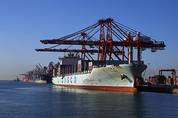
Amid the horror stories of failing Chinese shipyards and shipping lines, one area of maritime success has largely been overlooked. Port operators, which manage container ports and handle storage facilities, are doing well and are increasingly looking to expand overseas.In a report issued this week, analysts at Barclays led by Jon Windham said they expect to see this trend continuing in 2014, driven partly by China’s broader “going out” policy and a slowdown in activity at Chinese ports.Should this pan out, then dominant players COSCO Pacific, a unit of a major Chinese shipping line, and China
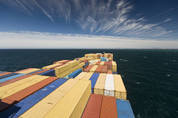
Seventeen of the Top 20 container carriers worldwide are expecting deliveries of new ships in the next 12 months, which could make 2014 a record-breaking year for capacity, according to industry analyst Alphaliner.More than 1.6 million 20-foot-equivalent units of new capacity are slated for arrival in the upcoming year, including 1.28 million TEUs or 76 percent for the Top 20 carriers. A further 315,700 TEUs owned by non-operating owners are currently open or without known charter assignment, most of which are expected to join the Top 20 carriers, and 85,000 TEUs are scheduled for delivery to
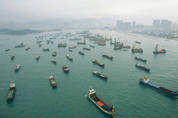
The overcapacity problem of the global shipping market is expected to persist going into 2014, limiting substantial recovery for the three main shipping segments of containers, bulkers and tankers, according to a latest report by research and strategic planning of DVB Group.In container shipping, trade demand is projected to improve in late 2014 on the back of a strengthening global economy with the strongest growth coming from regional trades. However the large part of the orderbook due for deliveries in 2014 is anticipated to keep rates under check, while pressure from supply side in 2015 is
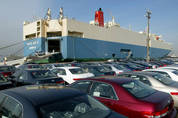
The car carrier sector has often been regarded as one of the industry’s good long-term bets. With healthy historical trade growth and a cargo likely to remain at the heart of consumer demand, projections have generally pointed towards the need for future investment. Here we examine the key trends; the latest edition of Car Carrier Trade Transport, freshly available on Shipping Intelligence Network, provides the detail.The Slow RoadGlobal seaborne car trade volumes grew by 179% between 1996 and 2008 (a robust 9% p.a. on average), while car carrier capacity expanded by 128%. However, in 2009 tr
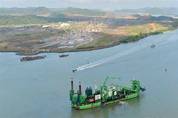
Upon completion of the expansion of the Panama Canal, the cost to transport grain from the U.S. corn belt to Asia will drop by an estimated 12%, thus increasing the cost competitiveness of the U.S. as a grain exporter to Asia, Rabobank forecasts.In a new report, “Panama Canal: Expanding the Gateway for U.S. Grain to the East,” Rabobank says the expansion of the Canal will accommodate grain-laden ships from the U.S. of 25% more capacity than before, resulting in a shift in U.S. grain shipping routes that doubles the draw area west of the Mississippi River for exports through the Panama Canal.R

Last Friday saw US retail’s biggest day of the year. “Black Friday” offers tempted shoppers into parting with $57.4bn in the US, followed by more online spending on “Cyber Monday”. That’s a lot of retail activity and the phenomenon is becoming more global. Much of the stock sold is shipped from its location of manufacture by container, so does this help shipping?Retail spikes like this aren’t a totally new phenomenon, and in any case they haven’t been much help in recent years. Since the onset of the economic downturn, the two key ‘mainlane’ container trades have performed relatively weakly
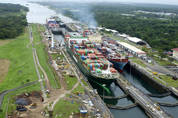
Headlines this year have been grabbed by containership ordering in the largest size sectors. 16 ships of 18,000+ TEU (totalling 0.29m TEU) have been contracted this year, along with 31 vessels in the 13-16,000 TEU sector (0.45m TEU). However, as the Graph of the Month shows, the 8-10,000 TEU sector has been even more active, with 74 orders totalling 0.68m TEU placed so far in 2013, accounting for 35% of contracts, and 40% of capacity ordered this year.New Designs Tempt InvestorsIn the current fleet there are 350 ships of 8-10,000 TEU, totalling 3.0m TEU. Meanwhile, boosted by 2010-11 contracti
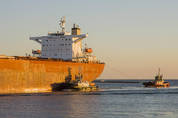
Economic forecasts globally and in particular in Asia have turned negative. The International Monetary Fund (IMF) recently forecast the GDP for China to be 7.6% in 2013, from 7.8% in July, and to 7.3% in 2014, down from 7.7%.In the IMF’s World Economic Outlook released last month, the IMF comments about the world’s second largest economy:“The extraordinarily high rates of investment, nearly half of GDP, have resulted in excess capacity and diminishing returns. At the same time demographic trends imply that the labor force will start declining after 2014, with surplus labor becoming exhausted b
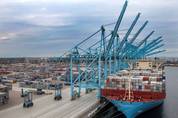
Ownership of terminals by subsidiary or related companies does not appear to have played a significant role in P3’s port choices.Although each P3 carrier has a connection with a terminal operator ? CMA CGM through owning Terminal Link (TL), MSC through its strategic relationship with Terminal Investment Limited (TIL) and Maersk Line through its sister company APM Terminals (APMT) ? it does not appear to have played a dominant role in the alliance’s recently announced port selections. For example, Rotterdam will lose calls for services operating between Asia and Northern Europe, even though it

The delegation of the port of Long Beach, which is the second-busiest container seaport in the U.S., visited Busan Port Authority on 4th Nov. to make sister port agreement. The Shippers' Journal met and interviewed the acting executive director Mr. Al Moro so as to listen to the co-operative areas between the two ports.We have been told that one of your primary goals to visit Korea this time is to set up a sister port relationship with the port of Busan. What would be the main co-operative areas in between two ports?After meeting earlier in the year with BPA's delegation in California, both